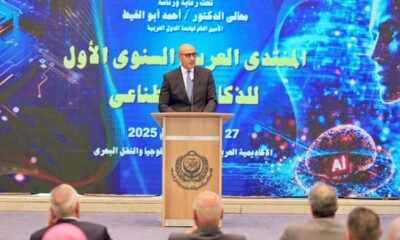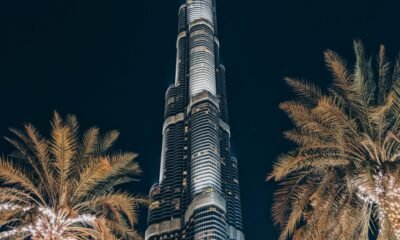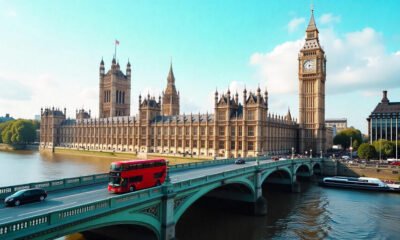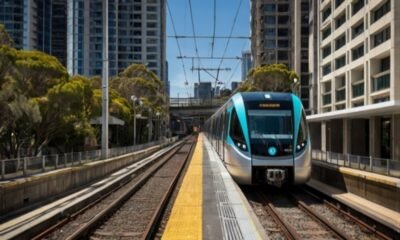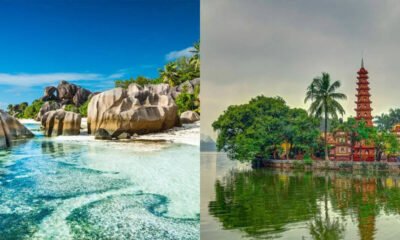Travel Guides & Articles
Now, UAE, India, Philippines, Saudi Arabia, Qatar, and Egypt Brace for Changes in US New Visa Interview Process: What You Need to Know
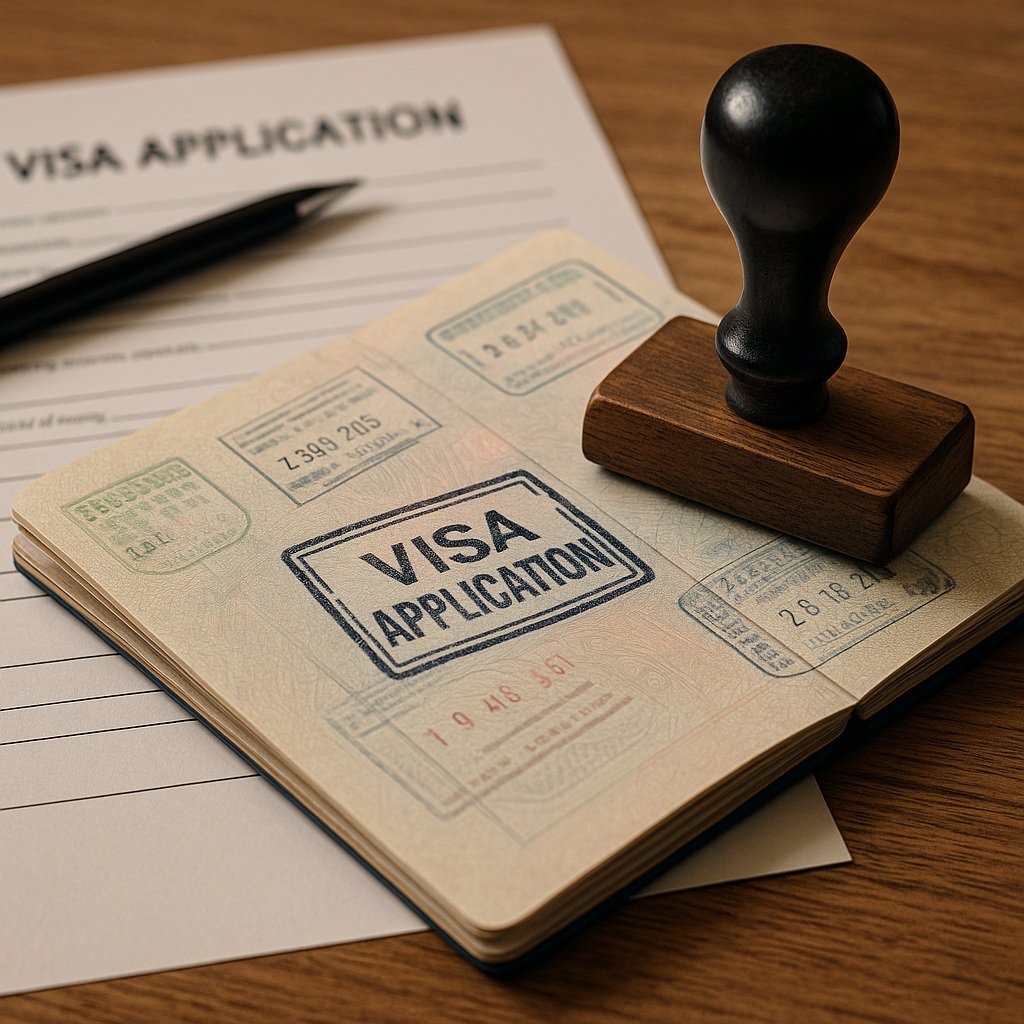
Wednesday, July 30, 2025
As global travel continues to rebound, the United States has introduced significant changes to its visa application process that will impact travelers worldwide, including those in Dubai, the UAE, India, the Philippines, Saudi Arabia, Qatar, and Egypt. Starting September 2, 2025, most non-immigrant visa applicants will now be required to attend in-person interviews, reversing several lenient rules that were put in place during the COVID-19 pandemic. This major shift is expected to significantly affect short-term visa applicants, especially those seeking B1/B2 tourist and business visas, and could lead to longer wait times and more stringent document requirements.
The move is part of the U.S. Department of State’s efforts to restore standard processing and screening procedures that were temporarily relaxed during the pandemic. While some categories of applicants may still qualify for interview waivers, the vast majority will now need to plan for additional steps in the visa process. This change will especially affect those from countries with high numbers of visa applicants, including Indian, Filipino, and Arab expats residing in the UAE. As a result, travelers will need to adjust their expectations and prepare for longer processing times, more comprehensive documentation, and in-person interviews as the U.S. returns to a more rigorous visa application protocol.
In this article, we will delve into the specifics of these new U.S. visa rules, the categories that are still exempt from interviews, and the broader implications of these changes on travelers from major regions, particularly the UAE and India. We’ll also offer tips on how to navigate these adjustments to ensure smooth travel plans.
Overview of U.S. Visa Changes: What’s New?
Starting September 2, 2025, a new U.S. visa policy will significantly alter the visa application process for most non-immigrant travelers, including children under 14 and adults over 79 years old, who were previously exempt from in-person interviews. This policy aims to return the U.S. visa system to pre-pandemic protocols, ending the temporary leniencies introduced to manage the global health crisis.
For many applicants, especially those seeking B1/B2 tourist or business visas, this means they will now be required to attend in-person interviews as part of their visa processing. The new system will likely slow down the overall processing time for visa applications, as U.S. consulates and embassies across the globe will have to manage higher volumes of applicants for face-to-face interviews.
Some travelers may still be eligible for an interview waiver, but these exceptions will be more limited than in the past. The U.S. Department of State has clarified that only certain categories of travelers will continue to benefit from the interview waiver, including:
- Diplomatic and Official Visa Applicants: Applicants for diplomatic or official visas under A, G, NATO, and TECRO E categories.
- Renewing B1/B2 Visas: Applicants who are renewing their B1/B2 visas within 12 months of the expiration date, provided that their previous visa was issued when they were at least 18 years old.
These waivers will be granted under strict conditions, and consular officers can still request an in-person interview at their discretion.
Key Changes to U.S. Visa Interview Requirements
The primary change to U.S. visa procedures involves the reintroduction of mandatory in-person interviews for most applicants. These interviews will be required even for those who previously benefited from interview waivers, including children and elderly travelers. While the specific categories eligible for waivers have been outlined above, the general shift is toward a more rigid, in-person vetting process.
Visa Categories Impacted by the Changes
- B1/B2 Tourist and Business Visas: These are the most commonly affected categories. Applicants for these short-term visas will no longer automatically qualify for an interview waiver, even if they previously had no issues in obtaining a visa.
- H1-B, L1, and Other Work Visas: Professionals applying for work visas will need to attend interviews unless they meet specific criteria for a waiver. This will particularly affect people from countries like India, the Philippines, and certain Middle Eastern countries, where work visa applications are common.
- F-1 and J-1 Student Visas: International students will also see an impact, as even those renewing their student visas may now be required to attend interviews. Given the high volume of student visa applicants from countries like India, China, and the UAE, this could cause significant delays in processing.
- Other Non-Immigrant Visas: Applicants for other types of non-immigrant visas, including temporary workers and tourists, will be similarly affected.
Implications for Applicants from the UAE, India, Philippines, and Other Countries
The new visa rules are expected to have the most significant impact on residents of countries that are major sources of U.S. visa applicants, including the UAE, India, and the Philippines. These regions already experience high demand for U.S. visas, and the additional requirement for in-person interviews could further strain consulate resources and lead to longer wait times.
- UAE: As a significant hub for expatriates, particularly from India and the Philippines, the UAE is likely to see a surge in demand for visa interview slots. Both the U.S. Embassy in Abu Dhabi and the U.S. Consulate in Dubai will need to manage this influx, potentially causing delays for applicants.
- India: India is one of the largest sources of U.S. visa applications, with thousands of people seeking B1/B2 visas each month. The new rules are likely to affect many applicants, especially those who previously enjoyed interview waivers, such as children and the elderly.
- Philippines: Like India, the Philippines has a large number of citizens seeking U.S. visas, particularly for family reunification and employment purposes. The new regulations will affect a significant portion of applicants from the Philippines, leading to longer wait times and increased pressure on consular staff.
How to Prepare for the Changes
Applicants from impacted countries need to adjust their expectations and plan ahead to account for the longer processing times and increased documentation requirements associated with the new U.S. visa rules. Here are a few steps to help ensure a smooth application process:
- Check Eligibility for Interview Waivers: While the majority of applicants will need to attend interviews, some may still qualify for waivers. Applicants should consult the U.S. consulate or embassy website in their region to confirm their eligibility.
- Plan for Longer Wait Times: Due to the increased demand for visa appointments, it is advisable to schedule visa interviews as early as possible, especially for travel during peak seasons like summer and the year-end holidays.
- Prepare All Required Documentation: U.S. visa applications require detailed documentation. Be sure to review the updated document checklist for your visa category, and ensure that all required forms, proof of financial support, and travel plans are submitted with your application.
- Follow Embassy Updates: Visa rules and procedures may change or vary by location. Always check the official U.S. embassy or consulate website for the latest information on appointment availability, document requirements, and interview procedures.
Conclusion: What Travelers Need to Know
The new U.S. visa rules represent a significant shift in the application process, with the introduction of mandatory in-person interviews for most non-immigrant visa applicants starting September 2, 2025. While some categories will remain eligible for interview waivers, the vast majority of travelers will need to prepare for longer processing times, additional documentation, and face-to-face interviews.
For applicants from countries with high visa demand, such as the UAE, India, and the Philippines, these changes will require more careful planning and earlier application submissions. By staying informed and following the guidelines provided by the U.S. embassy or consulate, travelers can better navigate the updated visa process and minimize delays in their travel plans.
Travel Guides & Articles
Modi and Putin affirm special relationship as India faces steep US tariffs over Russian oil imports : NPR
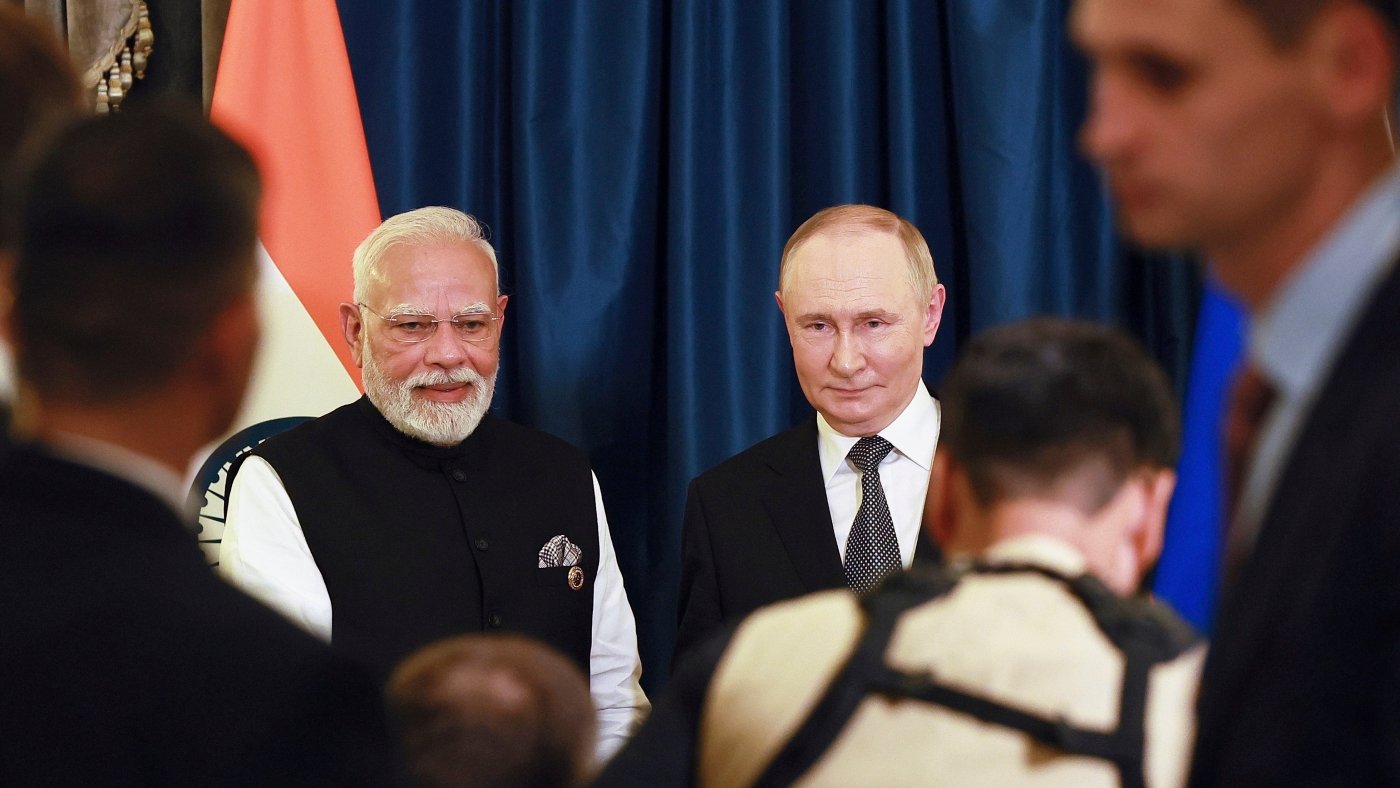
Indian Prime Minister Narendra Modi, left, and Russian President Vladimir Putin pose during their meeting on the sidelines of the Shanghai Cooperation Organization (SCO) summit in Tianjin, China, Monday, Sept. 1, 2025.
Vladimir Smirnov/AP/Pool Sputnik Kremlin
hide caption
toggle caption
Vladimir Smirnov/AP/Pool Sputnik Kremlin
TIANJIN, China — Indian Prime Minister Narendra Modi and Russian President Vladimir Putin met on the sidelines of a regional summit in China on Monday in a show of deepening ties when New Delhi’s relations with Washington are strained over the purchase of Russian oil.
The two leaders held talks after attending the key session of the Shanghai Cooperation Organization gathering in the port city of Tianjin, where discussions focused on regional stability, bilateral trade and energy cooperation.
In his remarks to open the talks, Modi termed the partnership with Moscow as “special and privileged.” Putin addressed Modi as a “dear friend” and hailed Russia’s ties with India as special, friendly and trusting.
“Russia and India have maintained special relations for decades. Friendly, trusting. This is the foundation for the development of our relations in the future,” Putin said.
Putin plans to travel to India in December for the 23rd India-Russia annual summit, according to his foreign affairs adviser, Yuri Ushakov.
Relationships on display
Modi used the SCO meeting to welcome the initiatives aimed at halting the conflict between Russia and Ukraine and called on the stakeholders to move forward constructively.
“To end the conflict soonest and establish peace permanently, we need to find out a way. It’s a call of the entire humanity,” Modi said.
Putin was accompanied by a large delegation that included top government officials. Russian state media reported that before sitting down for their formal meeting, Putin and Modi spoke one-on-one for almost an hour in a Russian-made limousine that Putin regularly takes on foreign trips.
Moments before the leaders lined up for a group photo, Modi was seen clasping Putin’s hand with the gusto of an old friend, bursting into his trademark hearty laughter. The moment was infectious as Putin grinned and chuckled, while Chinese President Xi Jinping gave a measured smile. The trio, ringed by watchful interlocuters, chatted animatedly for a few seconds.
Modi met Xi ahead of the opening of the summit Sunday and the two leaders pledged to resolve their border differences and bolster cooperation.
Washington pushing together China, Russia and India
Monday’s bilateral meeting between Modi and Putin carried added significance by coming days after U.S. President Donald Trump imposed an additional 25% tariffs on Indian imports, raising the total duties to a steep 50%, in retaliation for India’s continued purchases of discounted Russian oil.
Washington has repeatedly warned New Delhi against buying Russian crude, which it said was partly keeping Moscow’s revenues afloat to fund the Ukraine war. India has defended its imports as essential for meeting the growing energy needs of its 1.4 billion people.
Analysts said Trump’s steep tariffs and the tone coming from the White House have pushed New Delhi closer to China and Russia.
“While India-China reengagements started much before Trump, his policies are accelerating a process whereby India seems to be working much more closely with China and Russia to push back against economic unilateralism it is witnessing from the U.S.,” said Harsh Pant, vice president of foreign policy at New Delhi based think tank the Observer Research Foundation.
Modi travelled to Russia twice last year. The first was a visit to Moscow for talks with Putin in July, which was his first trip to Russia since the full-scale invasion of Ukraine by the Kremlin’s forces in February 2022. He then traveled to Kazan in October for the summit of the BRICS bloc of developing economies.
Trump’s reaction
As Xi, Putin and Modi showed extraordinary unity, Trump on Monday continued to jab at New Delhi.
As the summit wrapped up, Trump charged in a social media post that historically the U.S.-India trade relationship “has been a totally one sided disaster!” Trump also bristled about India surging its Russian oil purchases and signaled no trade deal with New Delhi is in sight.
“They have now offered to cut their Tariffs to nothing, but it’s getting late,” Trump said in the posting on his Truth Social platform. “They should have done so years ago. Just some simple facts for people to ponder!!!”
SCO nations share a history of business partnerships
Russia has had strong ties with India since the Cold War, and New Delhi’s importance as a key trading partner has grown since the war between Moscow and Ukraine.
China and India have become key buyers of Russian oil after the West shunned Russian exports to punish Moscow.
India historically bought most of its crude from the Middle East, but the world’s third-largest crude importer after China and the U.S. has started buying Russian oil available at discounted rates. Russia now accounts for around 37% of India’s total oil imports, according to analysts and Indian officials.
Trade between India and Russia has sharply increased in recent years, reaching a record $68.7 billion in the 2024-25 financial year. Imports from Russia reached around $64 billion and exports from India totaled about $5 billion, according to Indian government data.
The two nations aspire to bolster trade to $100 billion by 2030.
Modi’s meeting with Putin underscored New Delhi’s stance that India prized its old and reliable strategic partners and has sufficient strategic autonomy in its foreign policy to maintain and strengthen its multi-dimensional partnership, said Sreeram Sundar Chaulia, an international affairs expert at New Delhi’s Jindal School of International Affairs.
At the same time, the Indian government hopes the present rough weather between India and the U.S. is a temporary aberration, Chaulia said.
“Then, India can return happily to having the Russian cake and eating the American pie as part of its multi-alignment strategy,” Chaulia said.
Travel Guides & Articles
Fatehpur Sikri, India, travel guide: Seven highlights to see

Seven wonders within Fatehpur Sikri, India
This monumental Mughal capital 37 kilometres outside Agra was founded in 1571 but lasted scant decades. The magnificently mournful ruins are one of India’s most underrated sights.
1 Make a grand entrance through Victory Gateway
As you lurch out of Agra, dodging cars and camel carts, your first sight of this ruined city is an immense hilltop gateway, one of the world’s biggest, wobbling like a mirage in the heat. Victory Gateway was built in 1602 from red sandstone and white marble to commemorate Emperor Akbar’s military triumphs, although its Persian inscription warns the world doesn’t last. This by itself qualifies as a mighty monument, and the views are splendid.
2 Pause in admiration inside the mosque
Step through the gateway into the courtyard of the Friday Mosque and you get the first impact of this tremendous ensemble. Everything is built of red sandstone, everything outsized, and yet the decorative detail – window frames, balconies, roof brackets – wonderfully carved. The mosque is one of India’s finest and largest and centres on the tomb of a Sufi, inlaid with mother-of-pearl. Local women come to tie strings on the marble lattice in hope of being granted children.
3 Check out the architecture in the Audience Hall
This gloriously startling building in the royal quarter is where Akbar consulted advisers. The Diwan-i-Khas has wall recesses that served as bookshelves for royal documents and texts. However, your eyes will surely be on the enormous and wildly ornate octagonal pillar of the main hall, which rises from the centre of the room like the handle of an umbrella and props up an elevated walkway that resembles the balcony in an opera house.
4 Look up in the Imperial Treasury
Fatehpur Sikri shows wide Hindu, Islamic and Persian influences but this genius building next to the Audience Hall takes inspiration from Jain temple architecture and decorative sculpture. Stone safes are concealed in the walls, but gaze up: the brackets that hold up the ceiling are embellished with mythical elephant-headed sea monsters, said to guard treasures in the depths of the ocean. In the fields behind, don’t miss the odd-looking spiky tower erected in memory of Akbar’s beloved elephant Hiran.
5 Enjoy the faded frescoes in Mariam’s House
The harem complex has several fine pavilions, some showing Turkish influences and others covered with depictions of swans and horses. The carvings and fretwork are so fine in places you could mistake sandstone for wood. If you’re pressed for time, head straight to Mariam’s House, perhaps the best example. As a bonus, it has bright and sometimes surreal gold-tinted frescoes – look out for the diaphanous woman riding a gigantic parrot.
6 Wander through the other imperial quarters
This is the most impressive part of Fatehpur Sikri, erupting in columns, latticed screens and elaborately decorated architectural elements, and graced with ornamental pools and clipped gardens. Persian verses loop across the emperor’s bedroom or House of Dreams, although judging from his innumerable concubines Akbar spent scant time on sleep. The pool below the elevated kiosk cooled the bedchamber. This is just one of numerous buildings that might take an hour or two to admire.
7 Close your guidebook and get lost
Fatehpur Sikri was planned in the smallest detail: servants’ quarters, lavatory blocks, fountain drainage, masonry rings to hold silk canopies for courtyard shading. Take time to inspect the detail and soak up the melancholy magnificence away from the main visitor axis. Birds wheel overhead and squirrels sun themselves on walls. In the late afternoon the sandstone turns crimson, then orange and subtle pink before the light fades on this abandoned city of lost dreams.
The writer travelled as a guest of Incredible India incredibleindia.gov.in and Malaysia Airlines malaysiaairlines.com
Sign up for the Traveller Deals newsletter
Get exclusive travel deals delivered straight to your inbox. Sign up now.
Traveller Guides
From our partners
Travel Guides & Articles
Heavy rain alert in Delhi–Gurugram: IMD issues an orange alert; travel and safety advisory |
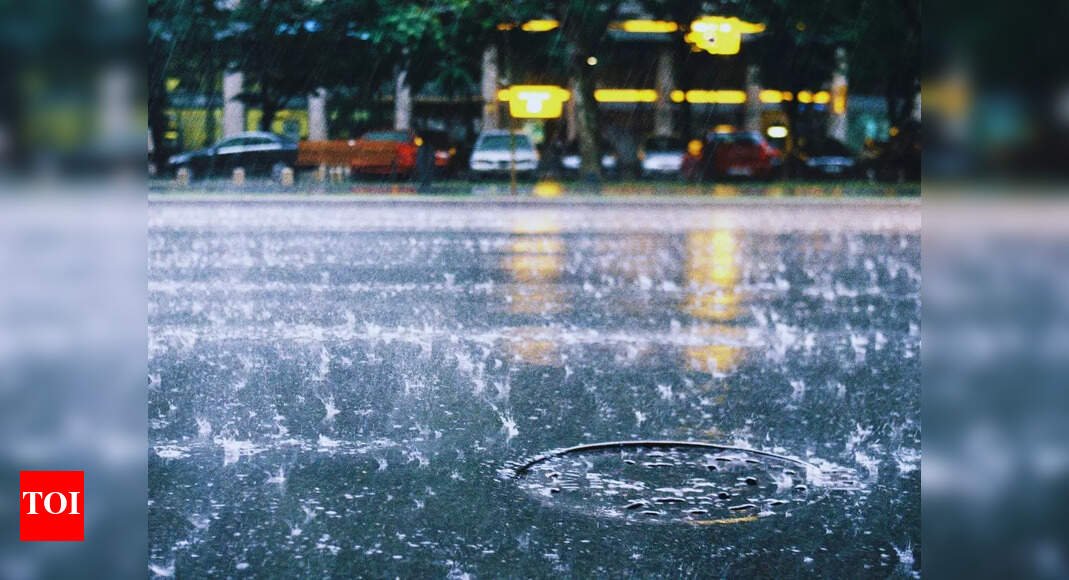
In a recent update, Delhi and its surrounding NCR cities, including Gurugram, Noida, and Faridabad, have received intense rainfall. The India Meteorological Department (IMD) has issued an orange alert for Delhi while a warning of very heavy rainfall and thunderstorms has been issued for Gurugram.Keeping the current situation in view, the District Disaster Management Authority has issued a travel advisory for Gurugram for 2nd September 2025. It reads:On September 1, 2025, Gurugram recorded over 100 mm of rainfall between 3 PM and 7 PM. The India Meteorological Department (IMD) has issued an Orange Alert, forecasting heavy to very heavy rainfall on September 2, 2025.In light of this warning:Corporate offices and private institutions in Gurugram district are advised to ask employees to work from home.
All schools in the district are directed to conduct online classes on September 2, 2025.On the other hand, Delhi too is experiencing non-stop rains which have caused waterlogging and long traffic across roads. Authorities are closely monitoring the Yamuna River too, which is expected to rise close to the danger mark of 206 metres on Tuesday. Low-lying areas are particularly vulnerable to flooding.India Meteorological Department forecastIn the present scenario, the India Meteorological Department (IMD) has issued an orange alert for Delhi for heavy rainfall. Similar alerts have been issued for NCR regions including Noida, Faridabad, and Gurugram. A yellow warning has been issued for Ghaziabad.Not only this, IMD has cautioned that northern India may experience heavy rainfall at least until September 5 especially for Uttarakhand, Himachal Pradesh, and Punjab which are under red and orange alerts.Travel disrupted, airlines issue advisoryAirlines such as IndiGo, Air India, SpiceJet, and Akasa too have issued warnings and advised people of possible delays and cancellations due to poor visibility. Passengers are advised to check flight status before leaving the house.Advisory
It is advised to avoid flood-prone zones, underpasses, and Yamuna ghats.Use public transport.For those in Gurugram, work from home is strongly recommended on September 2 as safety of people is more important.Keep a check on official IMD and local weather updates before planning anything.
-

 Business3 days ago
Business3 days agoThe Guardian view on Trump and the Fed: independence is no substitute for accountability | Editorial
-
Tools & Platforms3 weeks ago
Building Trust in Military AI Starts with Opening the Black Box – War on the Rocks
-

 Ethics & Policy1 month ago
Ethics & Policy1 month agoSDAIA Supports Saudi Arabia’s Leadership in Shaping Global AI Ethics, Policy, and Research – وكالة الأنباء السعودية
-

 Events & Conferences3 months ago
Events & Conferences3 months agoJourney to 1000 models: Scaling Instagram’s recommendation system
-

 Jobs & Careers2 months ago
Jobs & Careers2 months agoMumbai-based Perplexity Alternative Has 60k+ Users Without Funding
-

 Funding & Business2 months ago
Funding & Business2 months agoKayak and Expedia race to build AI travel agents that turn social posts into itineraries
-

 Education2 months ago
Education2 months agoVEX Robotics launches AI-powered classroom robotics system
-

 Podcasts & Talks2 months ago
Podcasts & Talks2 months agoHappy 4th of July! 🎆 Made with Veo 3 in Gemini
-

 Podcasts & Talks2 months ago
Podcasts & Talks2 months agoOpenAI 🤝 @teamganassi
-

 Mergers & Acquisitions2 months ago
Mergers & Acquisitions2 months agoDonald Trump suggests US government review subsidies to Elon Musk’s companies


